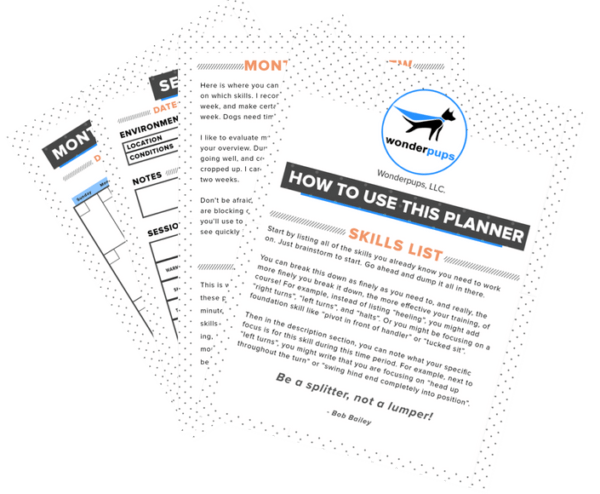Question: Does breaking down a behavior and teaching individual components take longer than teaching the whole thing in big chunks (*coughcough* lumps)?
Answer: Nope! Not at all. (or not if you’re doing it right.)
Most people will agree that breaking down a behavior to teach it is “the right thing to do.” But then why don’t they/we/I do it?
In fact, this is one of the more common comments/complaints that I get when someone considers my training methods (or similar, because it’s really not just me). “Oh, I wish I could train like you, I just don’t have the patience.” Or “I know he’s missing some foundation pieces, but I don’t have time to go back and fix them because he’s already 4 years old.”
Both are understandable concerns, even if they are inaccurate.
I understand why it would be counterintuitive to split an exercise… more pieces should equal more time right? But it turns out that’s not the case!
First, holes in understanding don’t just go away on their own (dammit). Simply repeating the exercise over and over again with the same error, particularly in the ring… well, we’re back to that definition of insanity again, right?
Second, I truly don’t have super human patience. Actually, I have rather substandard patience. Have you ever seen me sit still for 30 minutes? Never. I can barely even sleep for 30 minutes at a time before my brain decides it’s time to up and do something else (like review every regret I’ve ever had in my life). It’s only by conscious will power that I don’t snap at my husband every time he takes too long getting to his point when he’s telling a story. Which is every time he tells a story (the result is I only snap at him 2/3 of the time he tells a story). So however much patience you were naturally born with, I guarantee it’s better than mine.
But MOST importantly, it truly does not take longer to train a behavior in small pieces. That’s the whole point… the pieces are SMALL.
In fact, that’s actually why splitting behaviors into components works so well for my poor ADHD brain… I only have to work on a step for a short time and then it’s on to the next thing! Yay!
The thing is, the smaller the piece, the less time it takes to train it.
Now, to make sure we are comparing apples to apples, assume our goal behavior and criteria are the same. That’s actually one of the obstacles to comparison in situ… it certainly takes less time to train a 30 point heeling pattern than it does to train a 40 point heeling pattern. Training to a higher level of fluency and precision is going to be a longer path than training for a relatively weaker behavior with looser criteria. (And it’s also worth noting that not every behavior needs a super high level of precision, and that’s ok!)
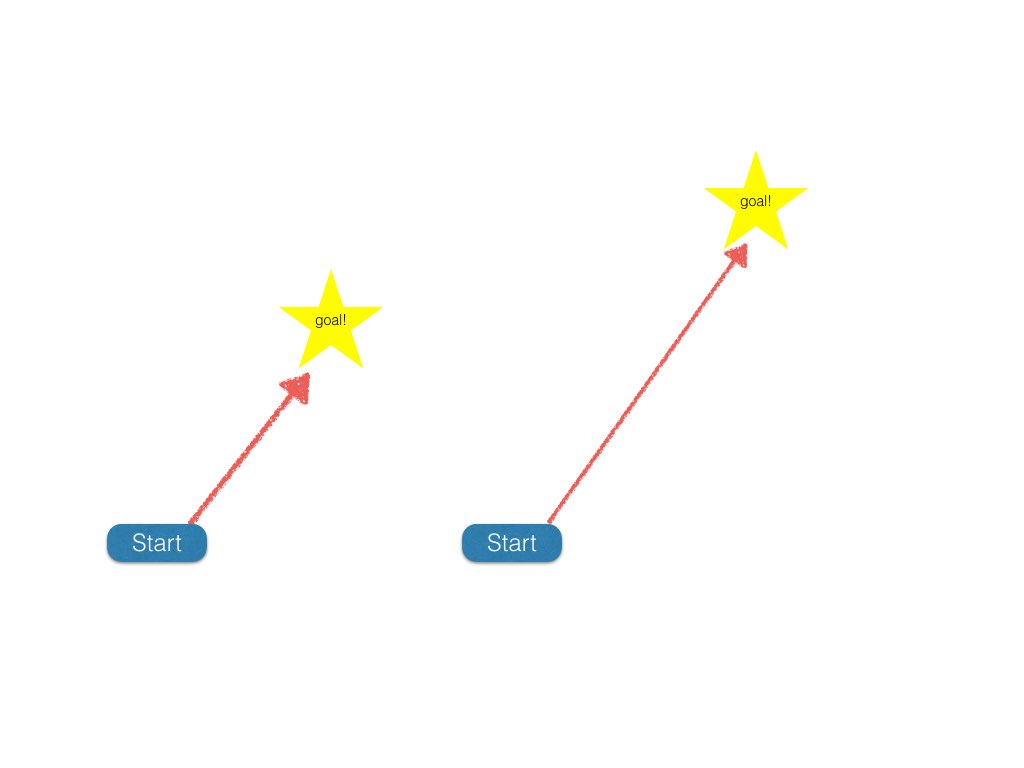
But assume that in both cases, the end goal behavior is the same. Same level of precision and fluency, same overall picture of the behavior.
In those cases, it nearly always takes significantly LESS time to reach the goal when splitting into small components because we’ve introduced a lot less error into the process, and again these little behaviors take a LOT less time to teach each one. We are also a lot less likely to get stuck on a plateau, unable to make progress.
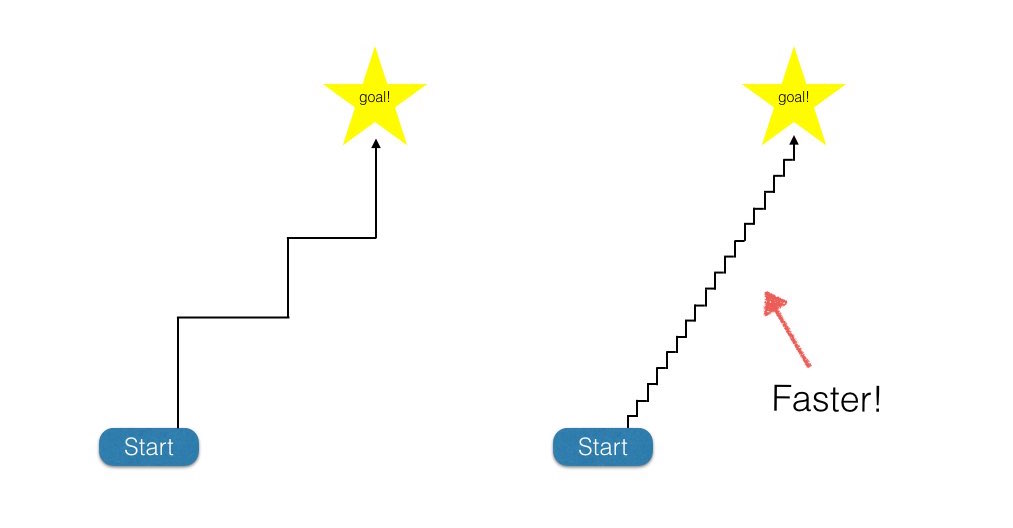
In fact, when we do find ourselves stuck on a plateau, it’s a really good sign that there is a place to make a split there. That doesn’t mean it’s easy to find, but at least you know where to start looking.
When I’m working on a training plan to break down a behavior, I’m looking to break it into components that I can teach in 10 minutes or less. 2 is preferable. So while I may have 10 or more components to a behavior I’m working on, I’m still only spending 20 minutes total teaching it.
When dealing with a small behavior, like a hand touch, the behavior is very straight forward. The criteria are very clear; the dog either touched or didn’t touch. Most dogs can get a basic hand touch behavior going in less than 2 minutes.
Smaller behaviors also mean more reinforced repetitions in a short amount of time. Reinforcement drives behavior. So a higher rate of reinforcement translates to faster learning.
Smaller behaviors are easier to set clearer criteria. Clearer criteria mean faster learning.
When we “lump” we are trying to get and reinforce larger chunks of behavior. The larger the behavior, the more room there is for error.
There are fewer reps per training session, because it simply takes longer to do each behavior, so you can do fewer of them in a 10 minute session. This means lower rate of reinforcement, which means slower acquisition of new behavior.
So even if the dog accidentally falls into a few steps of perfect heeling, the goal behavior, if it only happens once in that 10-minute session, we still haven’t really accomplished that much. It will take many more sessions to get consistent performance, and in between the dog is rehearsing 9.5 minutes of Not Perfect Heeling… and so we get stuck by that matching law thing (dammit!).
What usually happens when we lump, skipping over teaching smaller components of a larger behavior, is it ends up functioning sort of like a balloon loan. You may feel like you are paying less up front, but the trade off is you only end up having to pay a huge amount at the end.
In practice, that usually means you’re doing something to “get” the bigger behavior right off the bat… whether luring the dog along side you for “heeling” or throwing the dumbbell to induce the dog to chase it. So you feel like you are getting the behavior mostly started already, and that’s pretty reinforcing to the handler (trust me, I TOTALLY understand that)… only to spend the next 3-12 years trying to “fix” those pesky little details… like getting the same level of heeling behavior without food in your hand or getting a reliable hold or pick up of a stationary object.
When working with smaller components, or splits, each little piece may not “look” as much like the finished behavior, but they can be taught very quickly. And since we can be very, very specific about what each component is, and have specific plans for timing of event markers and placement of reinforcement, much less room for practicing incorrect behaviors.
Draw a triangle.

No, not like that. Draw a triangle.

NO! DRAW A TRIANGLE!

*sigh*
Draw a vertical line.

Place your pen on the bottom point of that line and draw a horizontal line.

Now connect the ends.
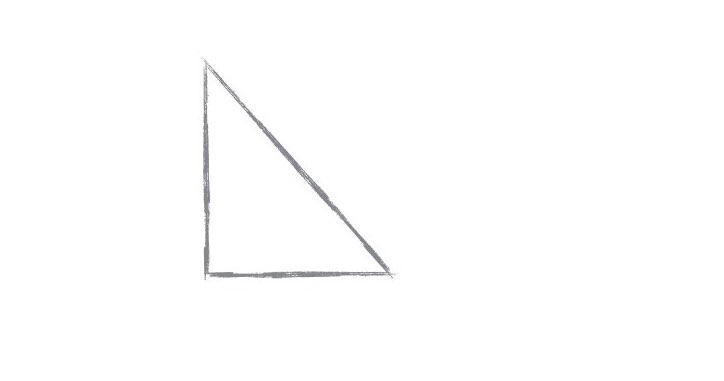
Good job! That’s a great triangle!
Breaking it down into easy to communicate pieces, where success is very clear to both learner and teacher, gets to the finished product more quickly most of the time than trying to get the whole thing in one go. It also gives us more control over the finished product, and with a whole lot less frustration on both sides.
But why does it FEEL harder to us, the teachers? Because it takes a lot more mental work and planning on our part. It requires us to study the finished behavior, and consider what components it can break down into. Look at the muffin, and think about the ingredients… the flour, the blueberries, the eggs, etc (and I’m going to stop right there with the baking analogy).
It’s almost always harder to find reinforcement in the planning process. Most of us feel the reinforcing effects of dog training only when we are out actually interacting with the dog. And so that often puts our behavioral contingencies at odds with our long-term goals.
There is also a self-control element… often the first steps in shaping the components of our behavior don’t look so much like the finished behavior. So it means we have to temporarily pull our eyes away from the vision finished outcome, to make that progress. You know how when you toss a ball and it goes outside the fence? And at first the dog runs to the fence and stares at the ball for a while, before he figures out to run along the fence to the gate, go around, and get the ball that way? It’s kind of like that. Not easy. And I think the more you want that ball, and the farther away the gate… the harder it is to turn and start running down the fence.
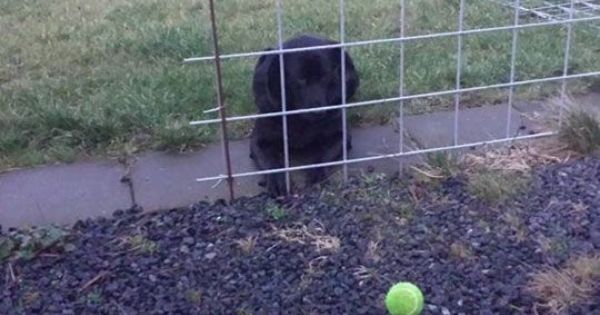
It’s also a lot harder if you are new to training, splitting, or even just to the specific behavior/exercise. If you don’t have a really clear picture of what it is you are trying to train, it’s really hard to wrap your head around how it might break down. That’s something that I run into myself with unfamiliar behaviors, like in agility or flyball. Having less experience in those sports, the splits are harder for me to find.
Experience helps, but that takes a while to build. Watching other dogs, ESPECIALLY on video where you can slow down the playback, helps even more.
Working with an instructor who DOES have more experience, and can help you find those splits and give you a recipe as a starting point to break down the components, is ideal. Let the instructor do some of that heavy lifting for you. Sure no one recipe works for all dogs all of the time, but it’s a place to start. Training recipes, like baking recipes, are really a form of shaping for the trainer… concentrate on your mechanics while you learn the recipe. Then once you are good at those parts, start experimenting with recipes of your own.
So if you are just getting started, and trying to train your first dog all on your own, with no clear picture of what “good heeling” actually looks like… take it easy on yourself. Don’t feel bad if you find yourself falling into lumping or doing a lot of trial and error. That’s normal! It gets better and using some of the strategies I listed above will help.
However, if this is your 3rd dog that you’ve been training to heel AND you have an experienced instructor, who is gently, but firmly, trying to give you reasonably split, bite-sized components of your goal behavior… give her the benefit of the doubt, and just try some of her suggestions. Otherwise, you will have no one to blame but yourself (said with love). Ok? 🙂
